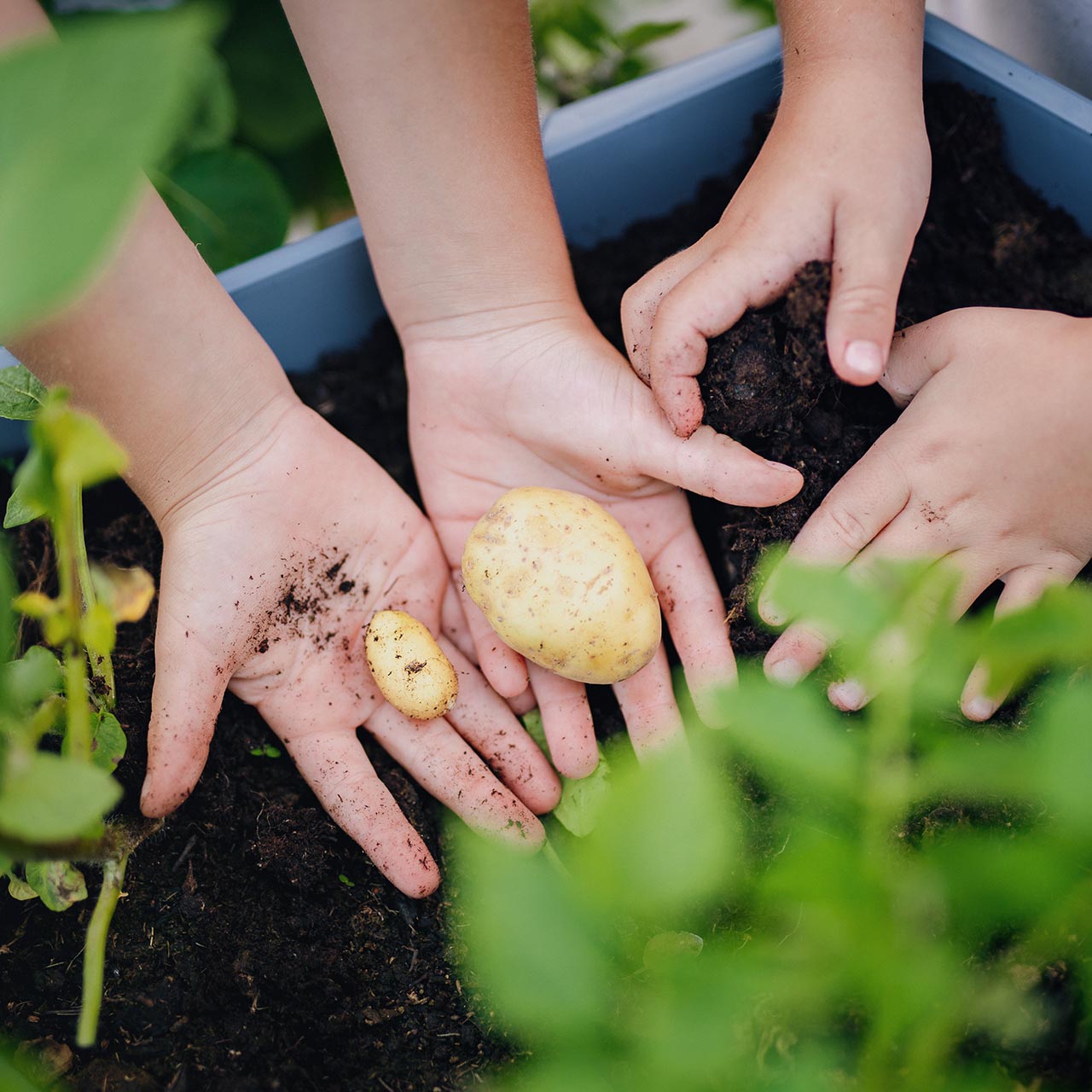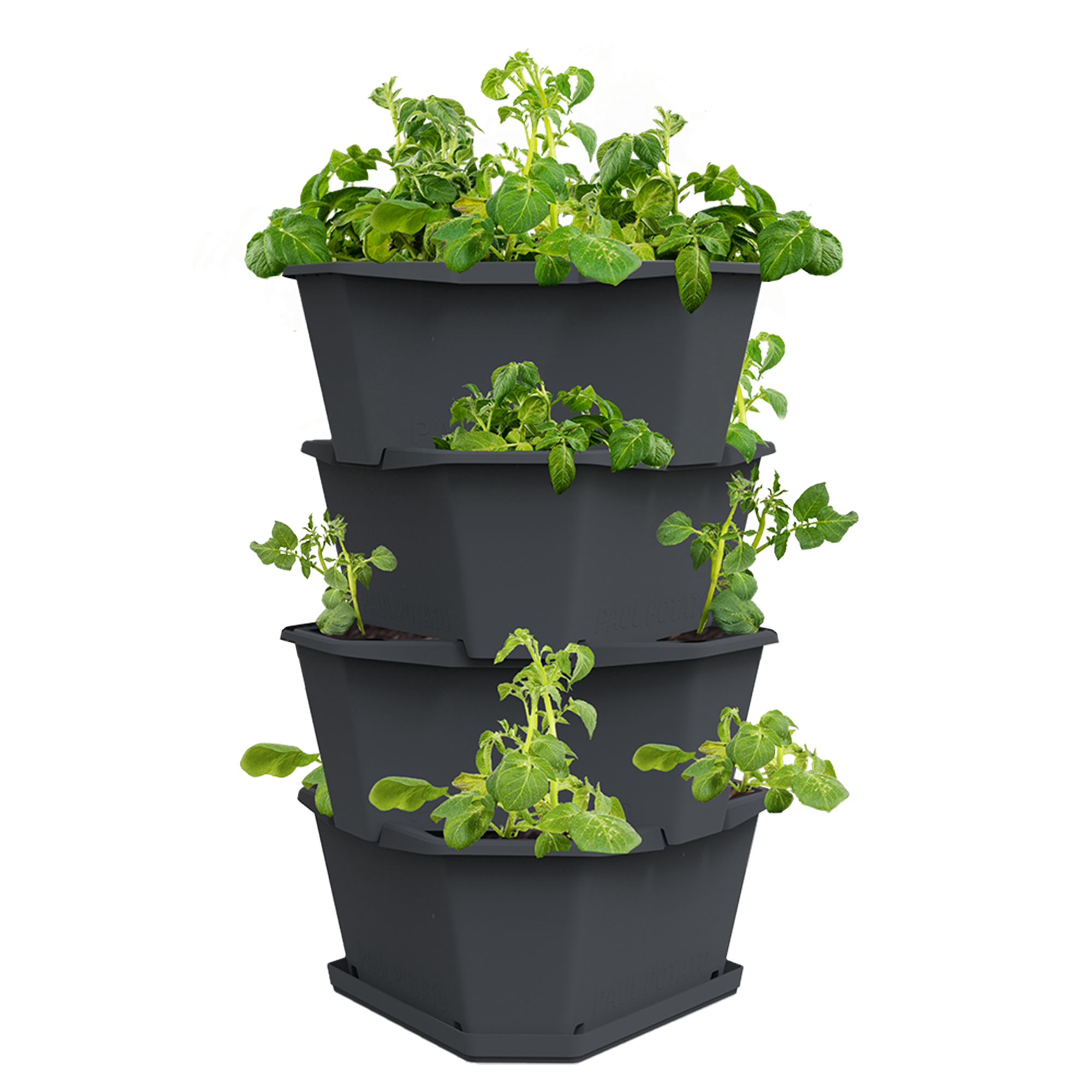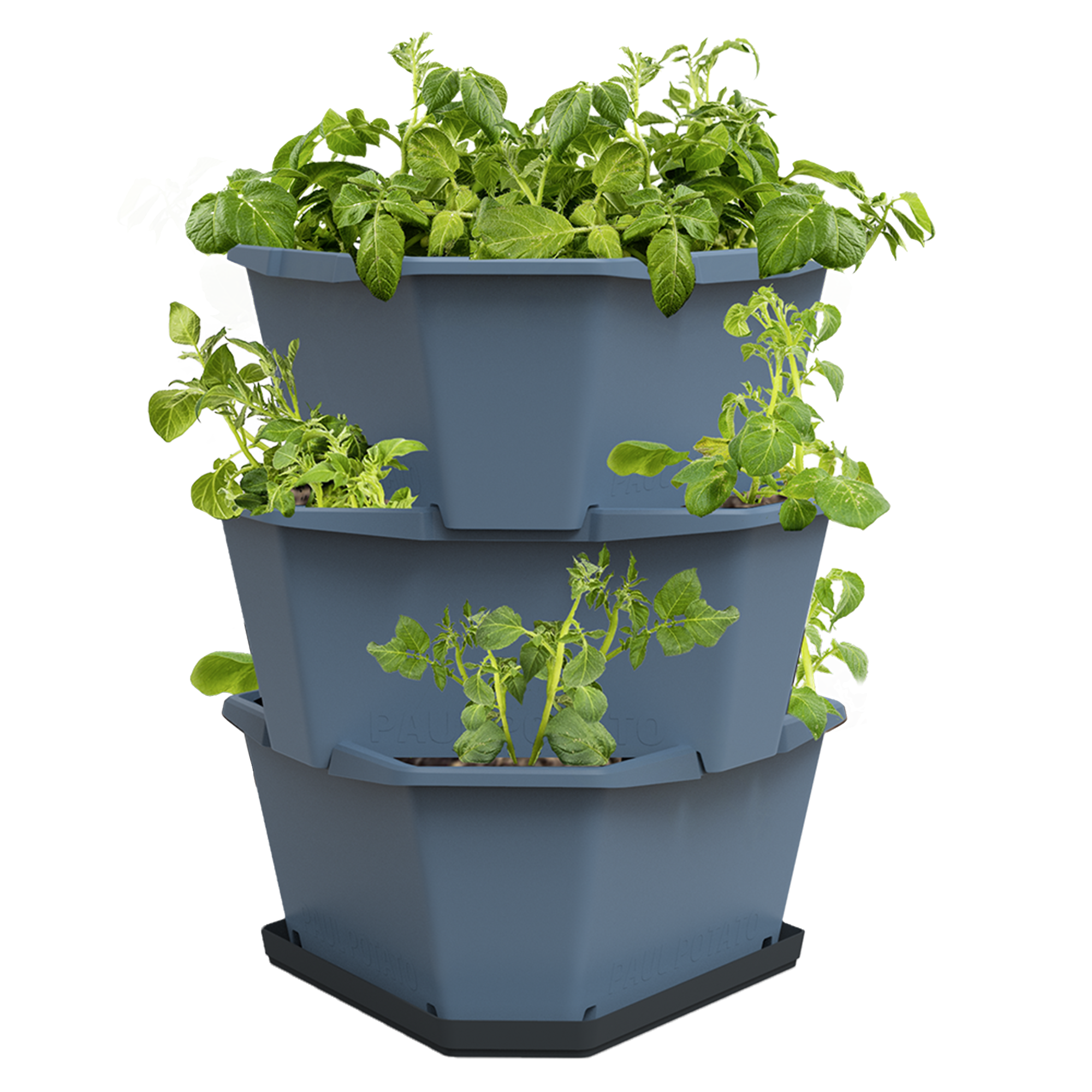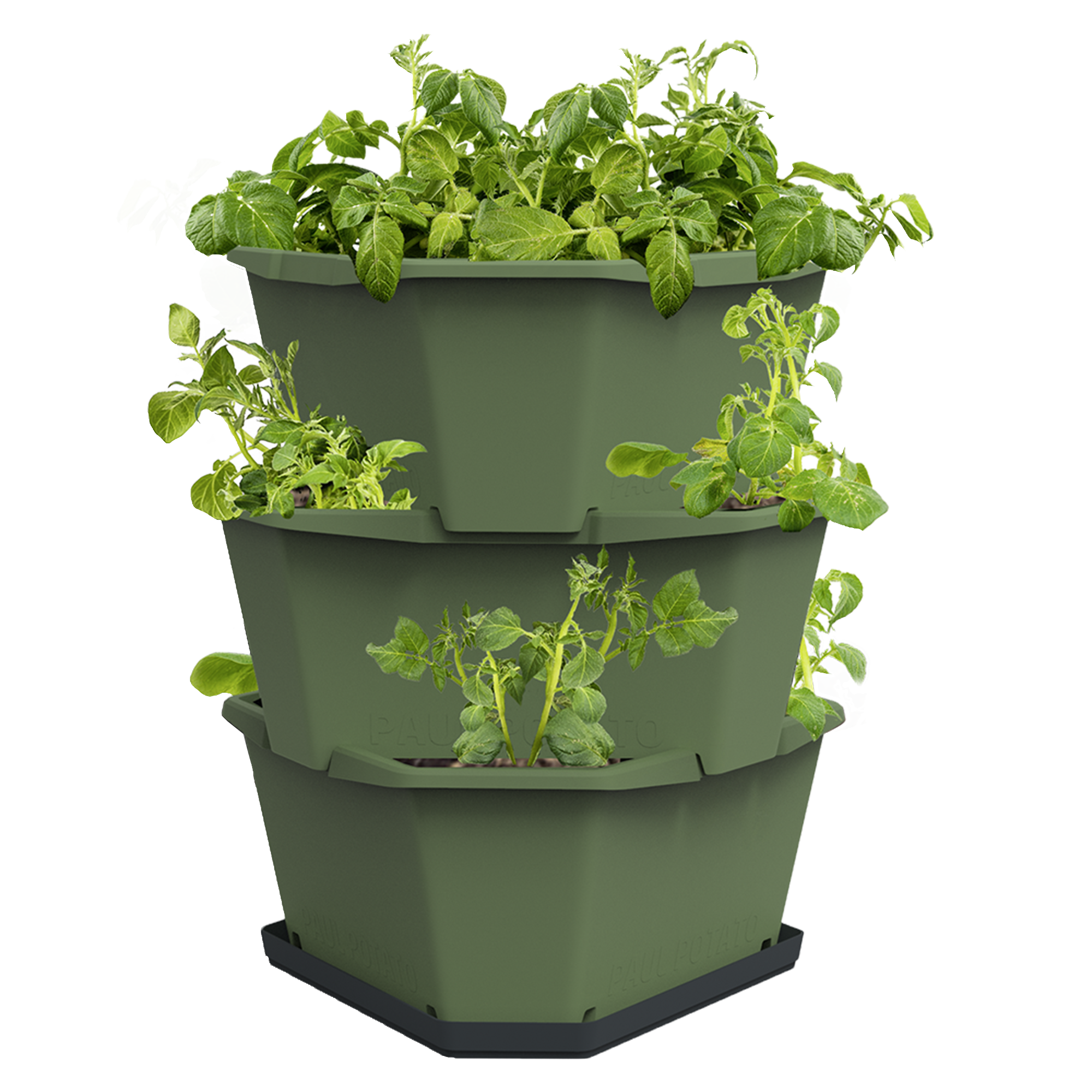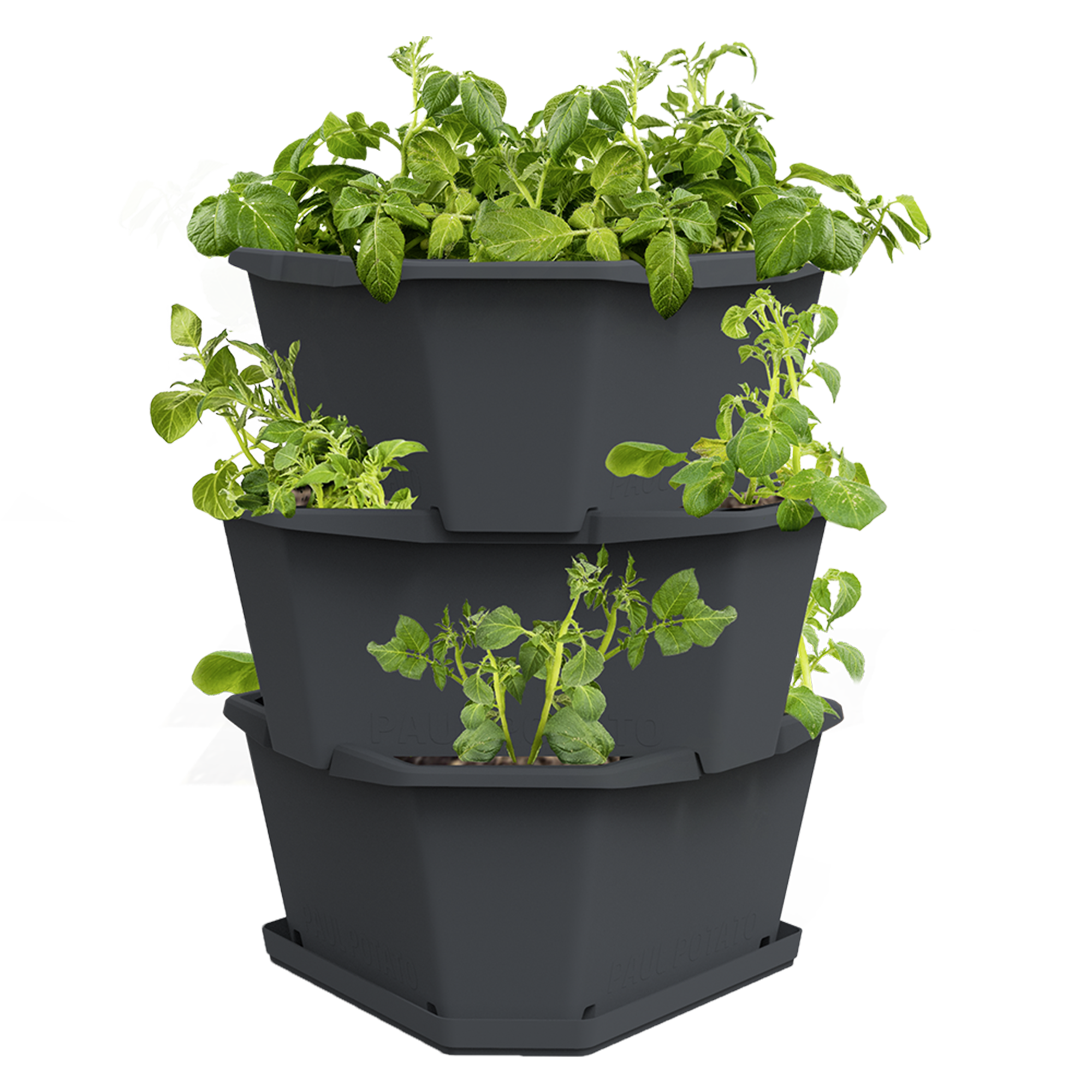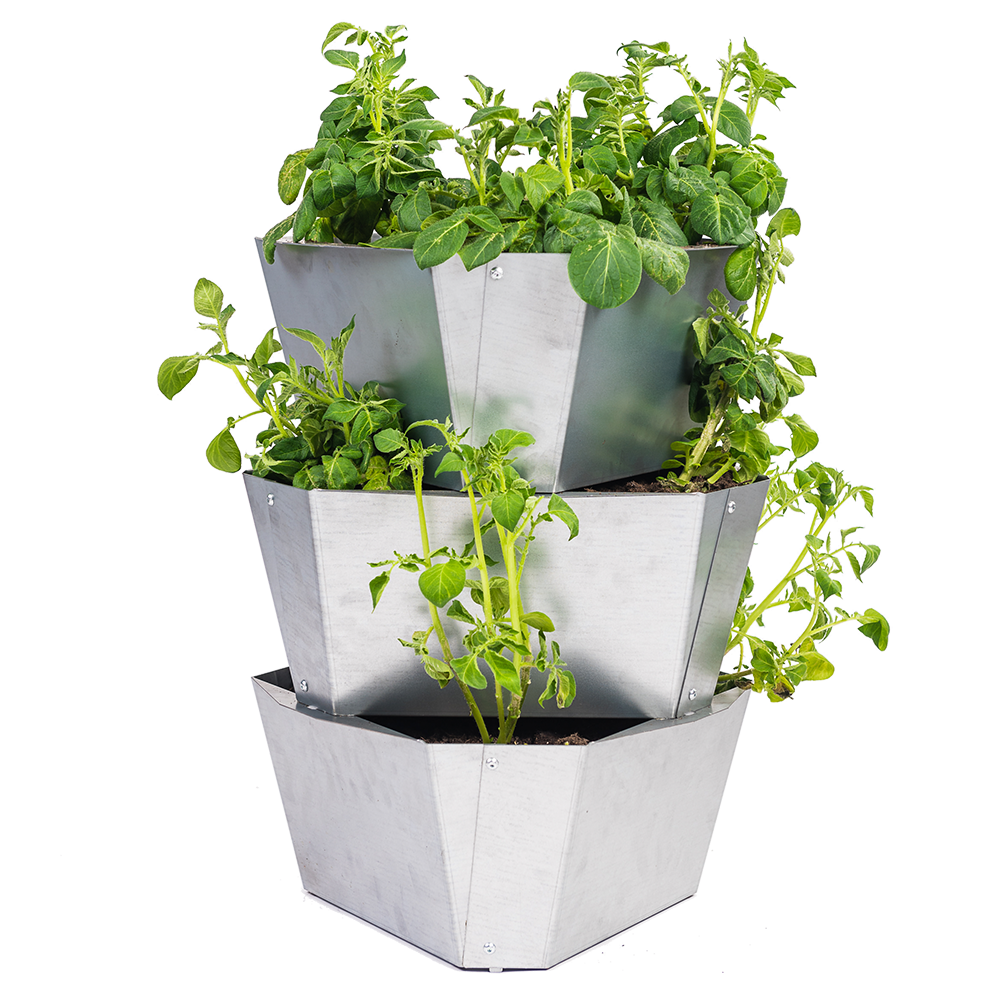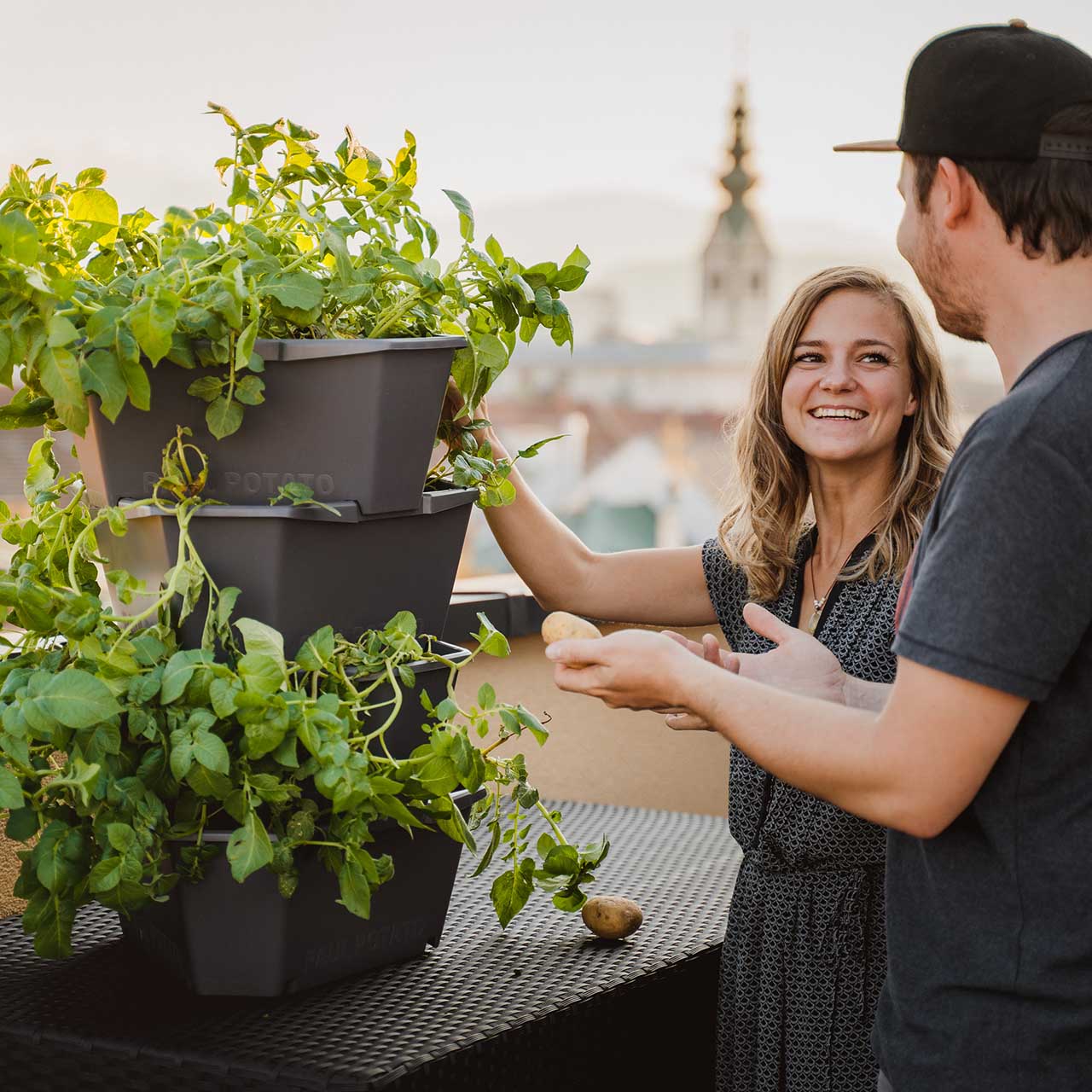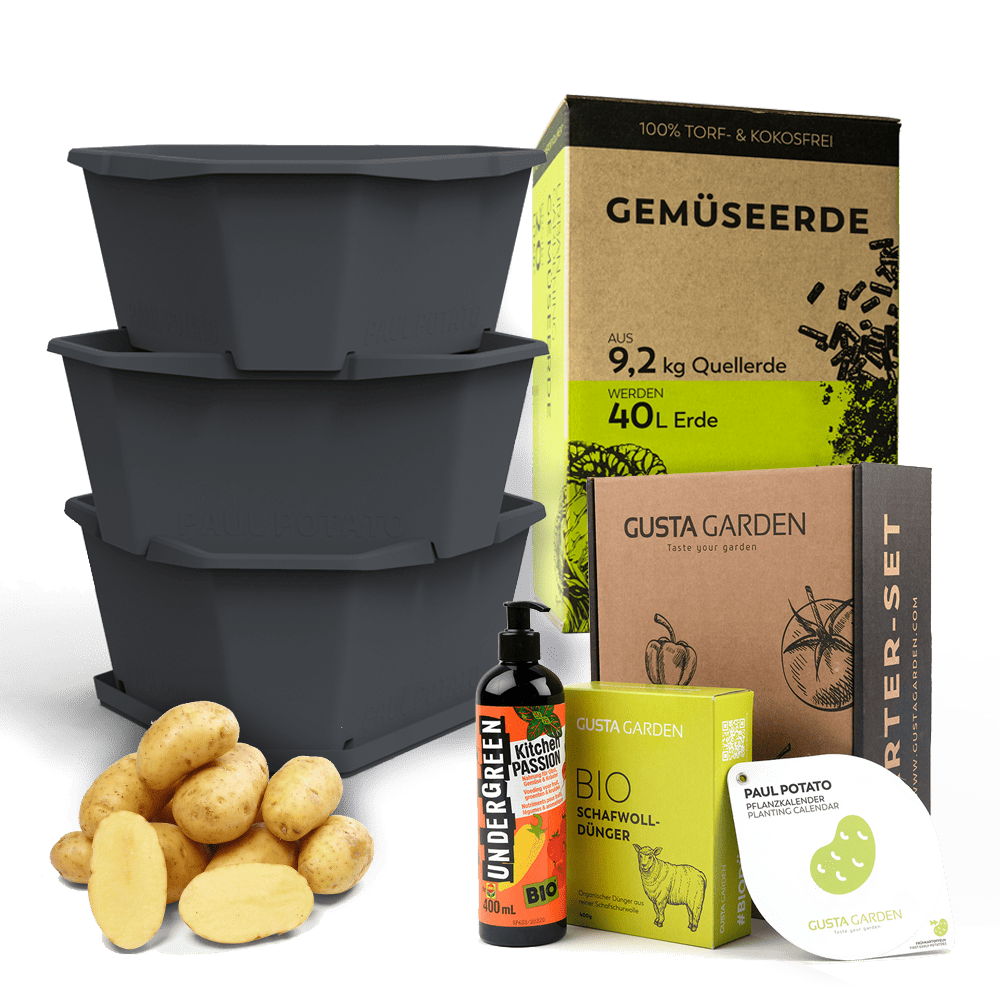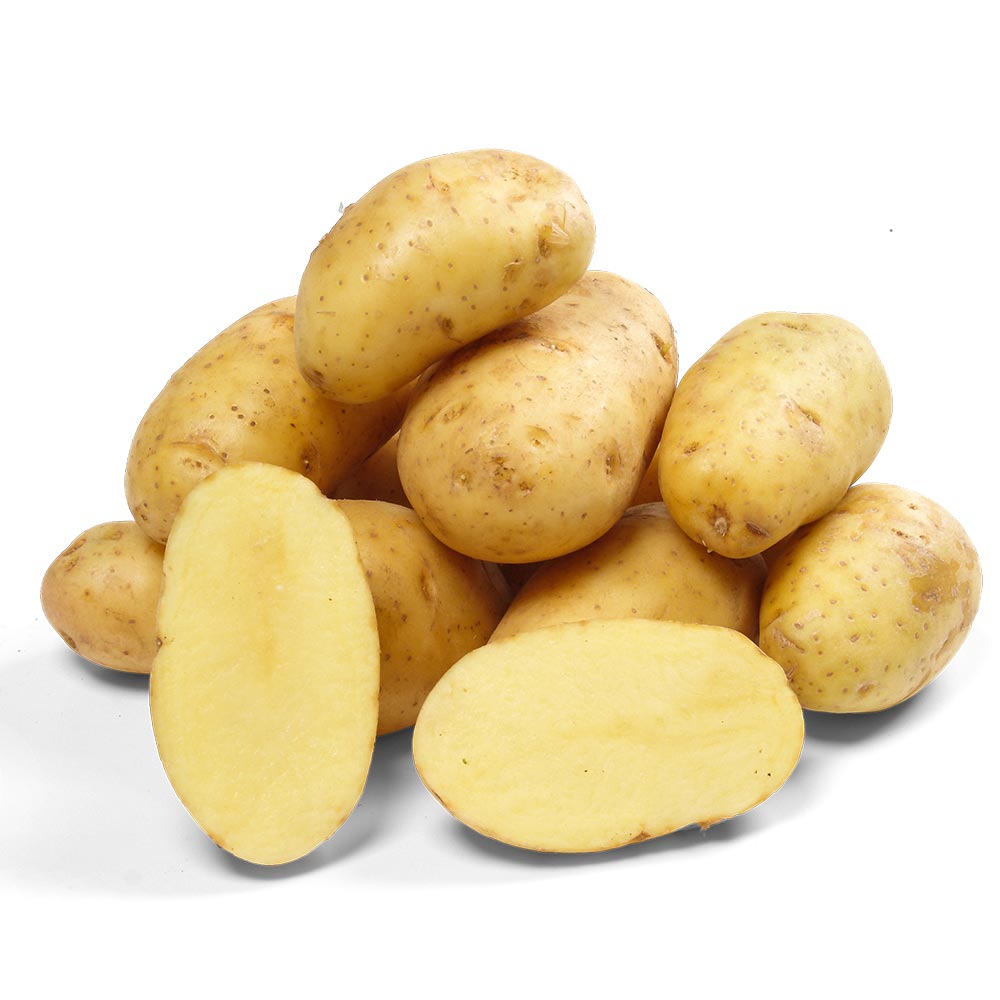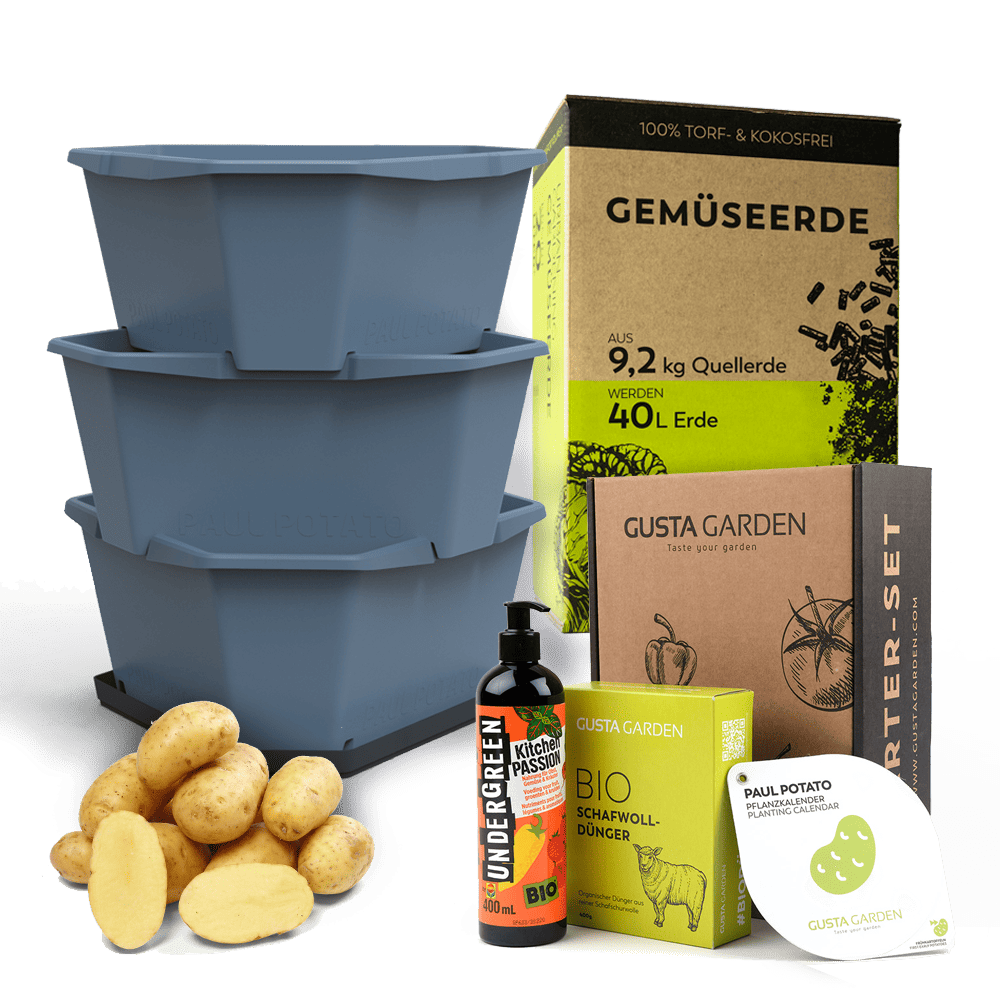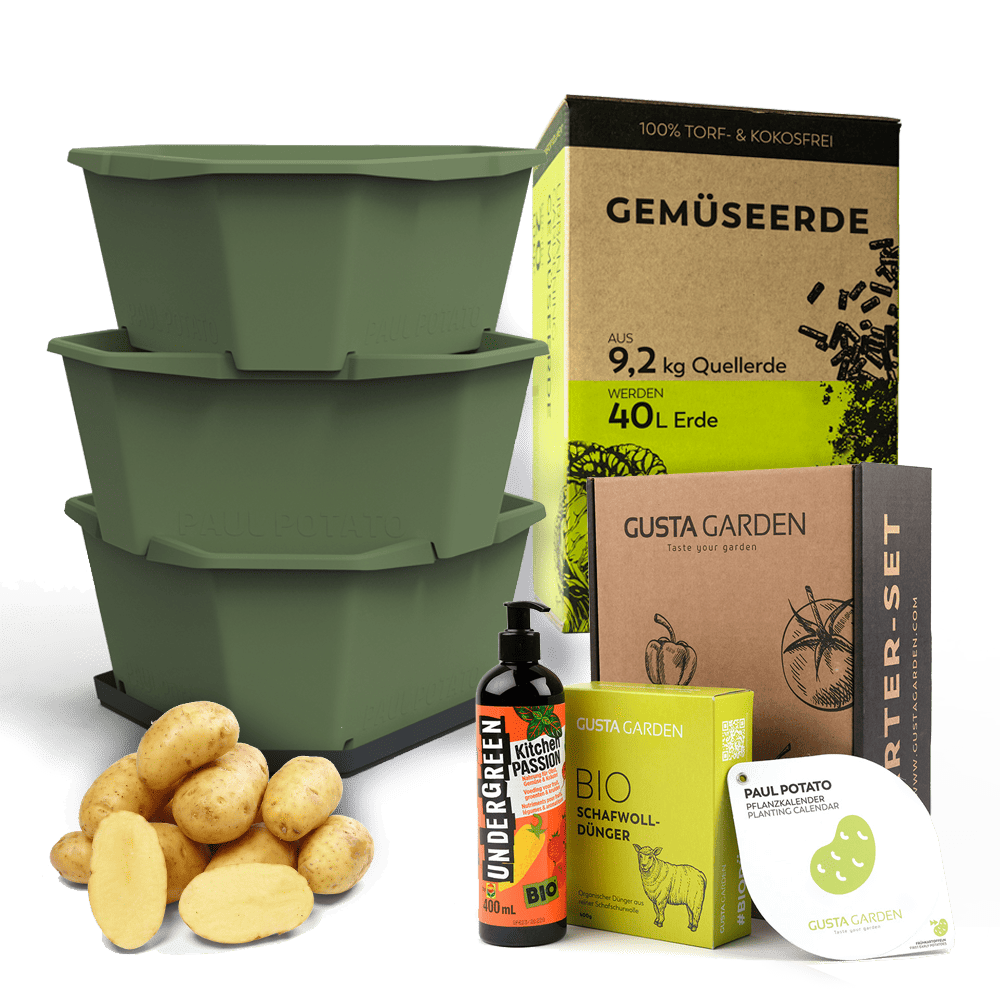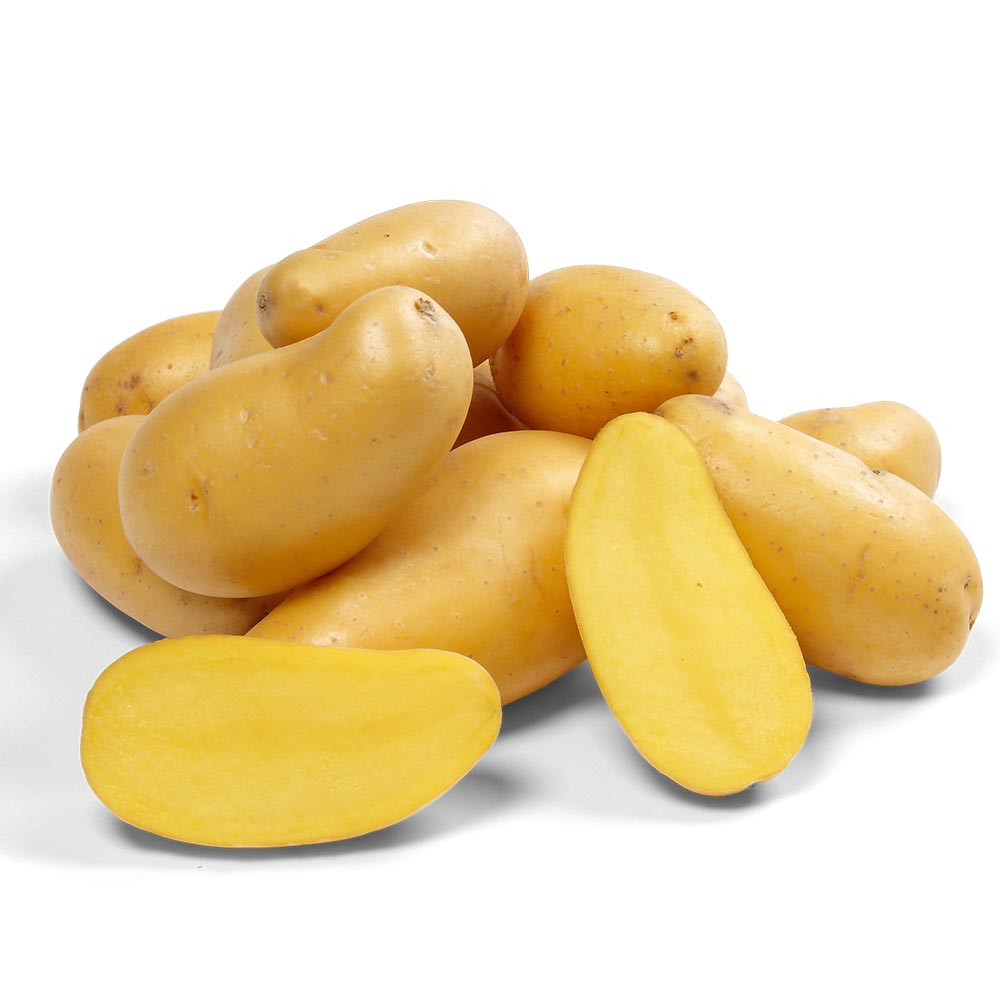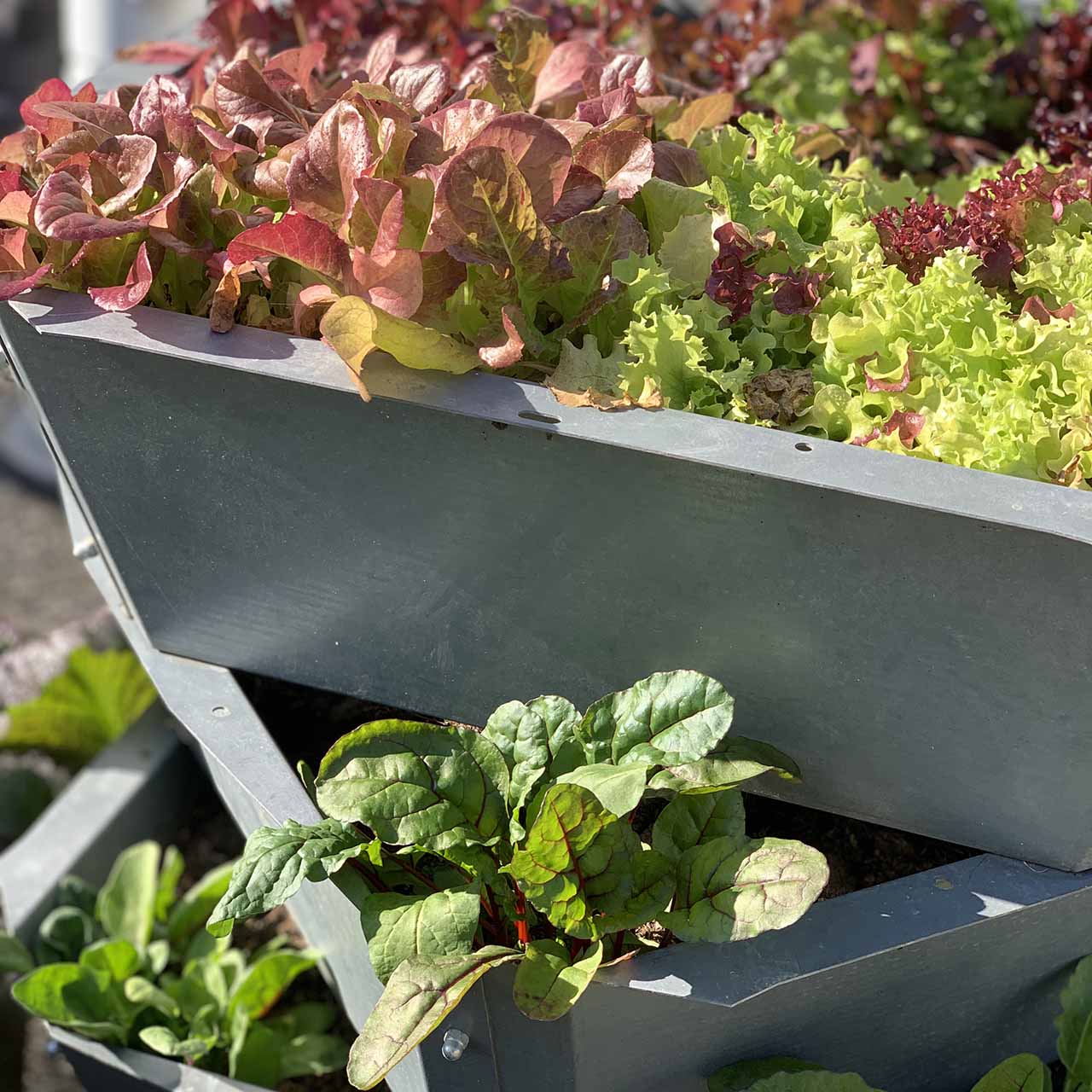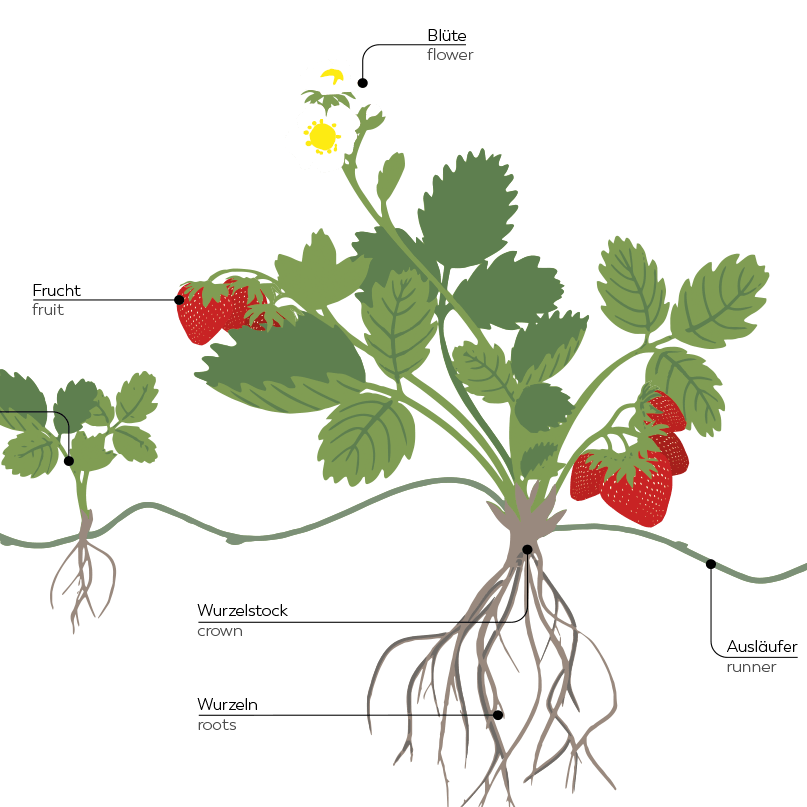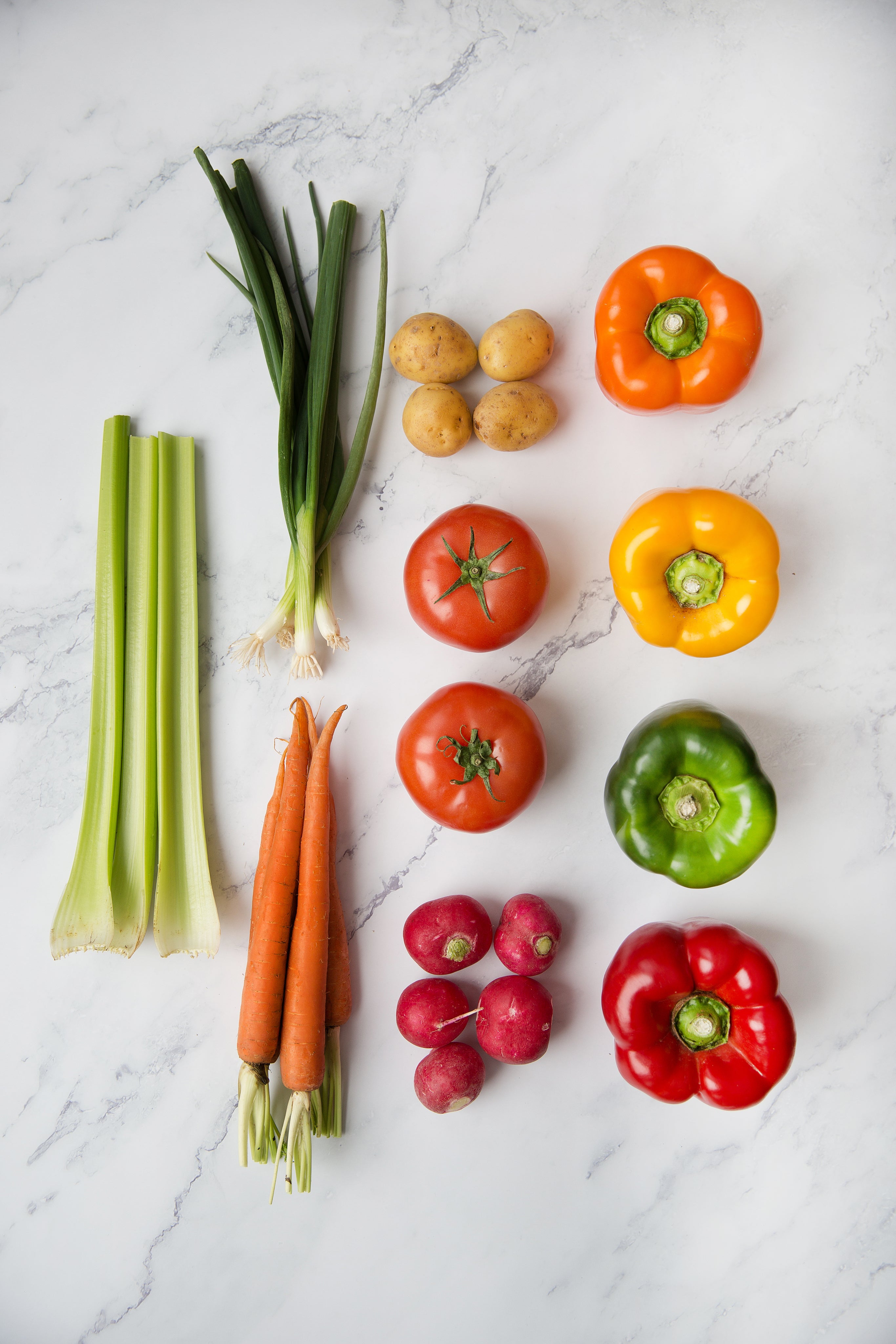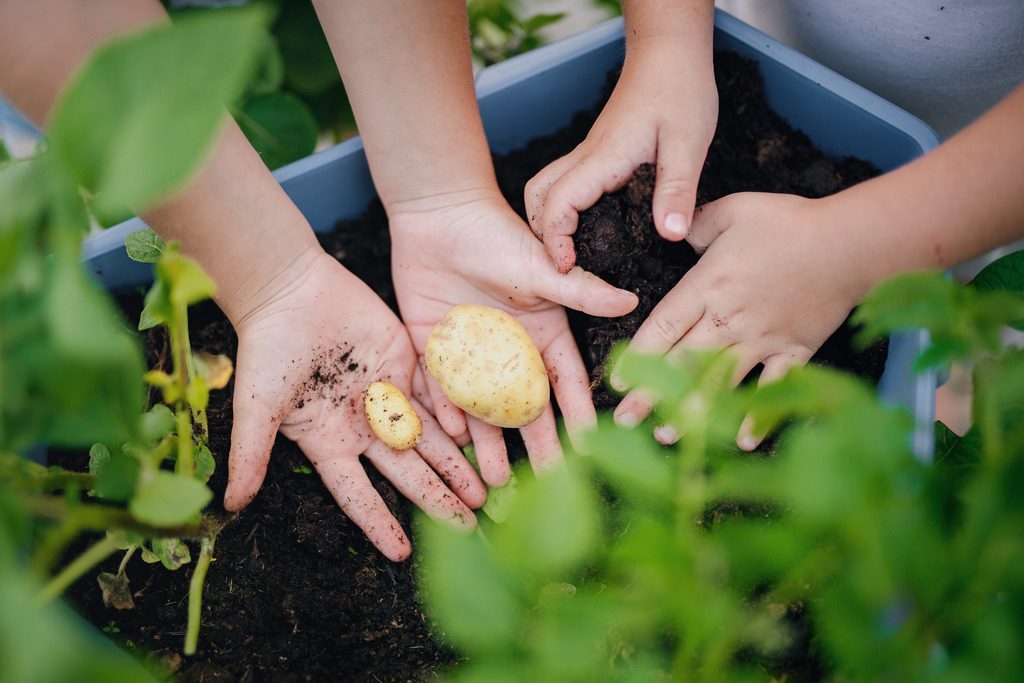
When is the right time to harvest your potatoes and how can I best store the potatoes? This is a question that everyone asks themselves Plant potatoes . In this blog post you will find all the information you need about harvesting potatoes!
In general, it can be said that the right time for harvesting depends on three factors: the potato varieties chosen, the weather and the nutrients in the soil. To determine the ripeness of your potatoes from the bed or the potato tower , there are a few signs that you can use to determine whether it is already time to harvest or whether you are still too early.
Harvest early potatoes
Harvesting early potatoes begins when the potato weed is still green. For very early varieties this can be the case as early as June , for early varieties ripening occurs in July - in principle, early potatoes have a ripening period of 90 to 110 days, but this of course depends on the variety.
Harvest late and mid-early potatoes
About 2-3 weeks after the herb begins to die and dry out, the late and mid-early potatoes are ready to harvest. As a rule, medium early to late potatoes require a maturation period of 120 to 160 days. Again, this depends on the type of potato.
What should you pay attention to when harvesting?
To make sure that the potatoes have really reached a sufficient level of ripeness for harvesting, you can use the following trick:
Carefully dig up one or two tubers and grate the peel . If it doesn't come off but sticks firmly to the potato, then your potatoes are ready to harvest.
You start the harvest by removing the potato weeds before digging up all the tubers. Be particularly careful not to damage any of the tubers, otherwise they will become very difficult to store. If it happens that you damage one of your potatoes while digging it up, you can simply process it as soon as possible. This will prevent it from going bad during storage and having to throw it away.
After digging, remove the excess soil from the potatoes and inspect the harvest. You can save very small specimens as seed potatoes for the coming year (however, the yield from new seed potatoes is usually significantly higher). Sort out tubers with green and brown spots straight away. You can dispose of those with green stains immediately. Due to the solanine they contain, these potatoes are neither suitable for consumption nor as feed for animals.
It is also recommended to let the potatoes dry for about a day. This will reduce the risk of mold forming during storage.

Store potatoes properly
Potatoes are best stored in a dark room at temperatures between 4 and 8°C . Make sure the room is well ventilated and dry . Onions have very similar storage needs as potatoes, but the two should never be stored together. Onions absorb the moisture from the potatoes and begin to rot more quickly.If you also have the coaster for your PAUL POTATO, you already have an optimal container for storage. Simply place your potatoes on a tier of PAUL POTATO and use the saucer as a lid . This way you guarantee that no light reaches your harvest and that the tubers are well ventilated through the recesses in the ground. This means they can be stored for a particularly long time. You can also put the potatoes in a fruit box or just lay them loose. This means that the potatoes can be stored well for weeks and sometimes months.
If the temperatures are too low, the starch contained in the tubers is converted into sugar and the taste becomes increasingly sweet over time. If the temperatures are significantly above the recommended ones, the potatoes may begin to germinate. Therefore, check again and again whether individual potatoes have small shoots and eat them as soon as possible.

Potato harvest with CookingCatrin
In her video, Katrin shows us how she harvests her own potatoes from PAUL POTATO and what delicious dishes she creates with them.Are you now in the mood for CookingCatrin's potato cheese or their roasted potato salad ? We have the recipes for you!
